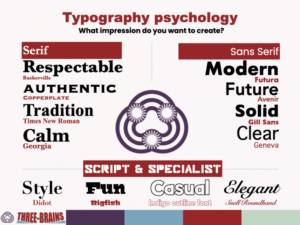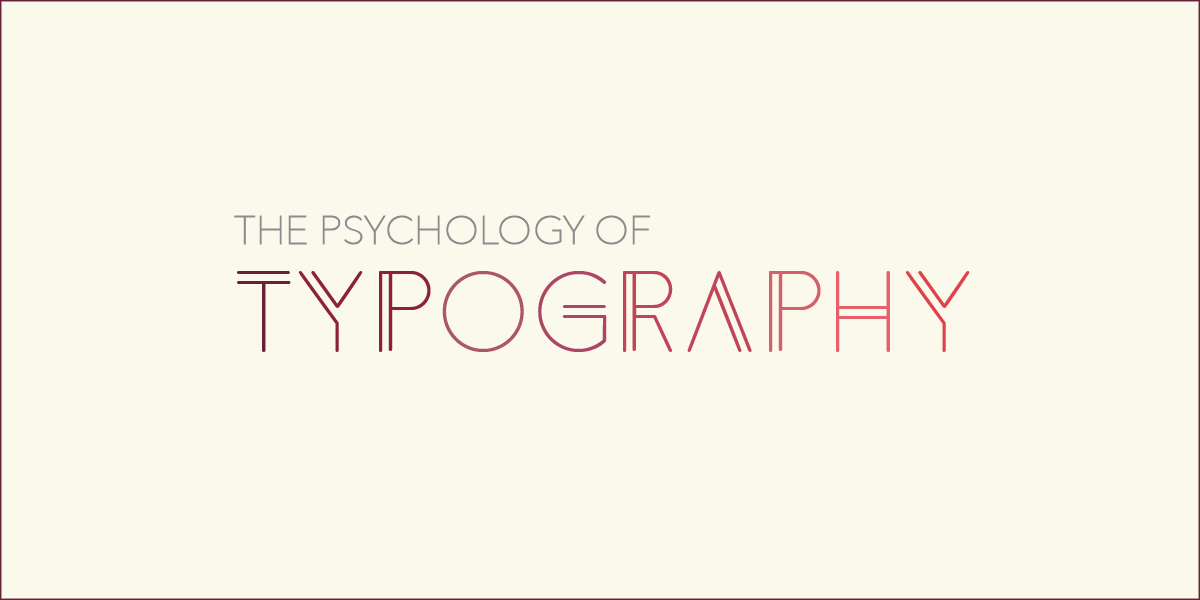The Science of Typography: Choosing Fonts That Influence Behavior
Typography that influences behavior – Typography is more than just the art of arranging letters, it’s a powerful communication tool that can influence emotions, shape perceptions, and drive actions. The fonts you choose for your brand, website, or marketing materials can subtly guide how people feel about your message and whether they engage with it.
In this article, we’ll explore the science of typography, how different fonts affect human behavior, and how you can choose the right typeface to strengthen your brand identity.
Understanding the Psychology of Typography
Typography that influences behavior – Typography psychology is the study of how different typefaces affect mood, readability, and decision-making. Just as colors have emotional associations, fonts carry their own psychological weight.
From the trustworthiness of a serif font to the modern feel of a sans-serif, typography sends subconscious cues that influence the way your message is received.
How Fonts Influence Perception
Typography that influences behavior – Your choice of font can dramatically change the way people interpret your brand’s personality:
– Serif Fonts (e.g., Times New Roman, Georgia)
Associated with tradition, reliability, and professionalism. Often used in academic and legal contexts.
– Sans-Serif Fonts (e.g., Arial, Helvetica)
Clean, modern, and approachable. Common in tech companies, startups, and minimalistic designs.
– Script Fonts (e.g., Pacifico, Lobster)
Elegant, personal, and creative. Popular for invitations, luxury branding, and artistic businesses.
– Display Fonts (e.g., Impact, Bebas Neue)
Bold, attention-grabbing, and expressive. Ideal for headlines, posters, and branding that demands attention.
By matching your font choice with your brand’s tone and audience expectations, you create a more consistent and compelling message.
The Science: Why Fonts Affect Behavior
Research in cognitive psychology and user experience (UX) shows that typography affects behavior in three main ways:
1. Readability and Comprehension
Easy-to-read fonts increase information retention and reduce mental strain, keeping users engaged longer.
2. Emotional Response
Fonts trigger emotional cues rounded letters feel friendly, while sharp, angular fonts can appear assertive or formal.
3. Trust and Credibility
Studies have shown that people perceive messages as more credible when presented in professional, well-chosen fonts.

Typography and Brand Identity
Typography that influences behavior – Typography plays a central role in brand identity. A font is not just a decorative element, it’s part of your brand’s voice.
For example:
– Luxury brands like Chanel and Vogue use elegant serif fonts to reinforce exclusivity.
– Tech brands like Google and Microsoft prefer sans-serif for a clean, approachable look.
– Creative brands like Pinterest and Etsy experiment with script or custom typefaces to stand out.
Choosing fonts that align with your brand’s values and message helps build stronger recognition and loyalty.
When selecting fonts for your brand or project, consider these tips:
1. Know Your Audience – Younger audiences may respond better to modern, playful fonts, while older audiences may prefer classic, traditional styles.
2. Match Your Brand Personality – Ensure your typography reflects your brand’s tone, whether professional, casual, creative, or luxurious.
3. Prioritize Readability – Decorative fonts are great for headlines but can be hard to read in long text blocks.
4. Use Font Pairing Strategically – Combine a bold headline font with a clean, simple body font for balance.
5. Test Across Platforms – Make sure your fonts look good on mobile, desktop, and print.
Common Typography Mistakes to Avoid
Even the best design can be ruined by poor typography choices. Avoid:
– Using too many different fonts (stick to 2–3).
– Choosing decorative fonts for body text.
– Ignoring line spacing and kerning.
– Using fonts that don’t align with your brand identity.
The Role of Typography in Conversion Rates
Typography that influences behavior – In marketing, the right typography can increase conversion rates. For instance:
– Readable call-to-action (CTA) buttons encourage clicks.
– Bold headlines grab attention and guide the reader’s eye.
– Trustworthy fonts in forms and checkout pages can reduce cart abandonment.
Small tweaks in font choice and size can make a big difference in user engagement and sales.
Table of Contents
Final Thoughts
Typography that influences behavior – Typography is both a science and an art. The fonts you choose influence how people feel, think, and act when interacting with your brand. By understanding the psychology behind typefaces and applying best practices, you can create designs that not only look good but also drive meaningful results.
The right font isn’t just about style, it’s about strategy.
Read also: Brand Archetypes: How to Find and Use Yours

